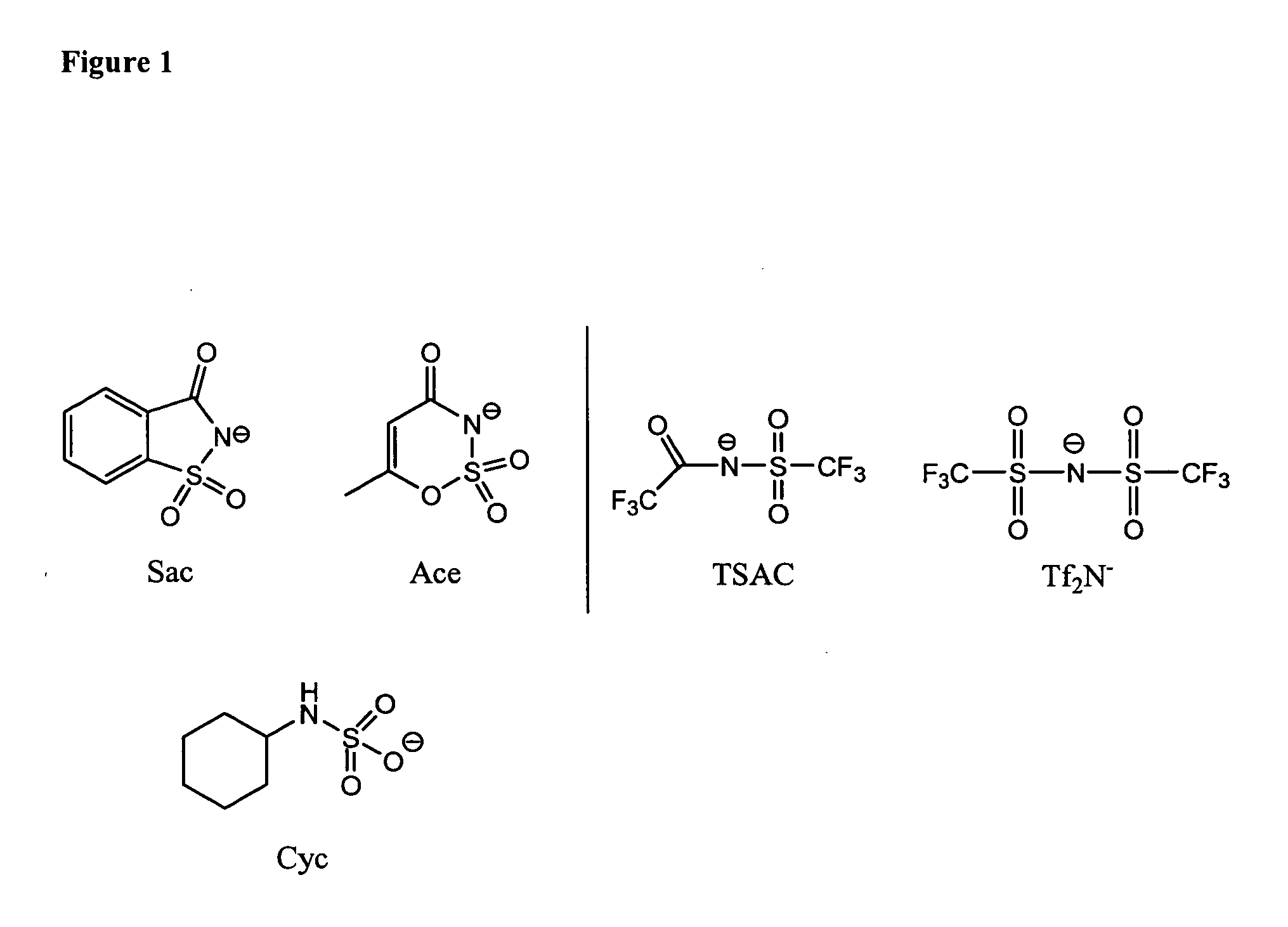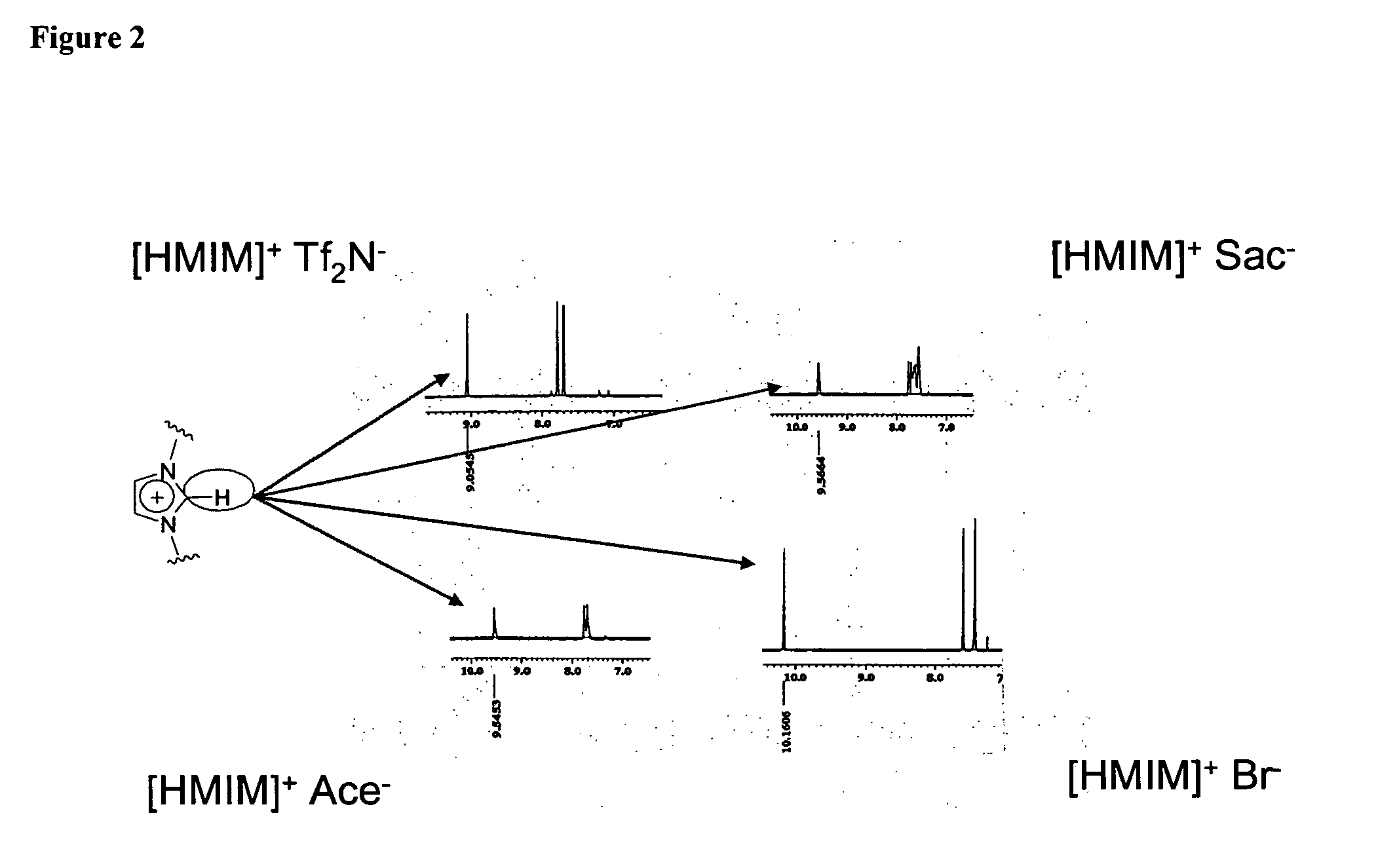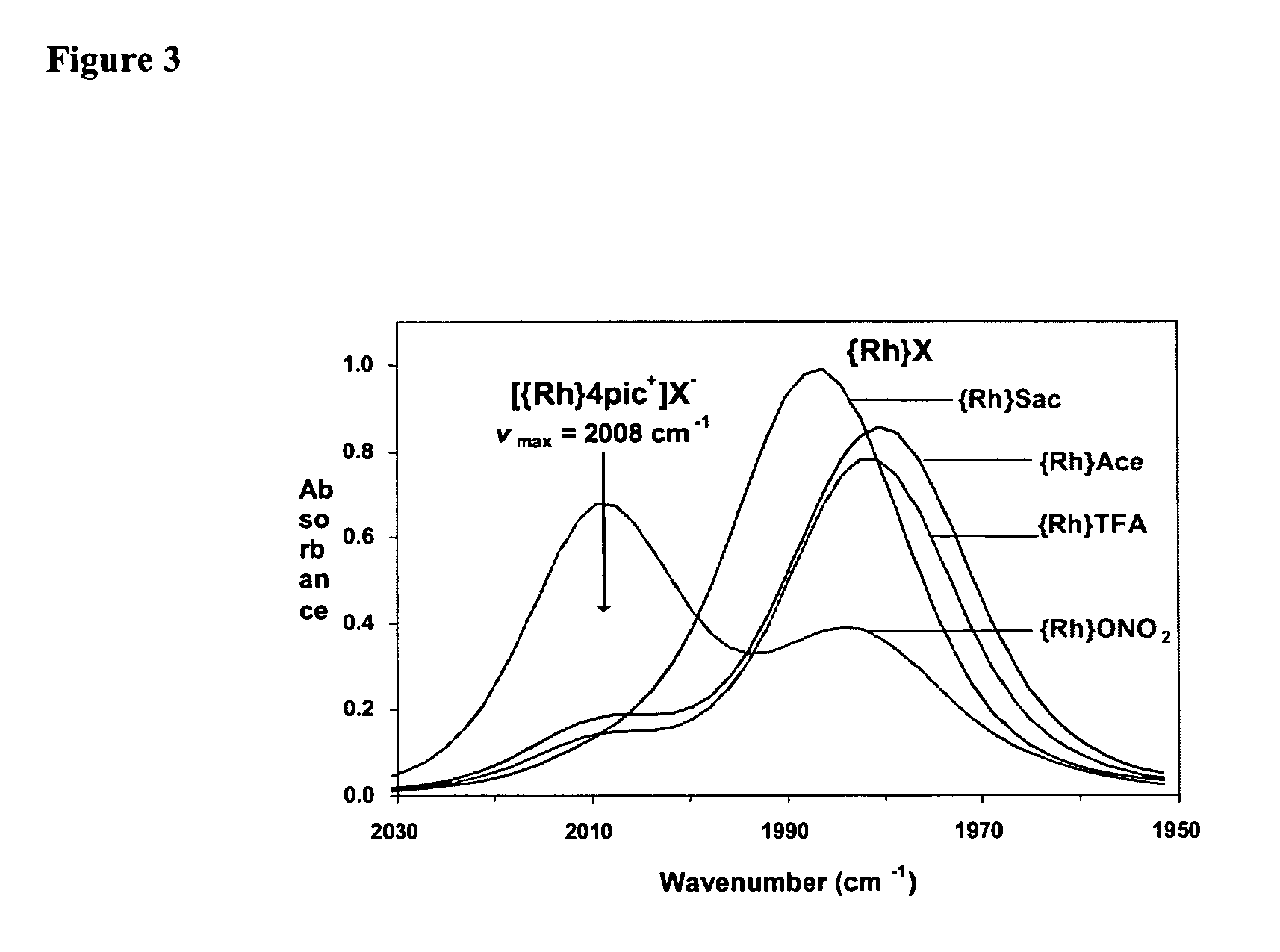Anionic-sweetener-based ionic liquids and methods of use thereof
a technology of anionic sweetener and ionic liquid, which is applied in the direction of organic compound/hydride/coordination complex catalyst, physical/chemical process catalyst, domestic cooling apparatus, etc., can solve the problems of high mw/active site ratio, rapid deactivation of coking, and restricted access of matrix-bound acidic sites
- Summary
- Abstract
- Description
- Claims
- Application Information
AI Technical Summary
Benefits of technology
Problems solved by technology
Method used
Image
Examples
example 1
[0915] Synthesis of [HMIM] Ace
[0916] In a 500 mL round-bottomed flask charged with a magnetic stir bar, 25.0 g of potassium acesulfame (0.12 mol) is added to 200 mL of acetone. To this solution / suspension is added in one portion 21.0 g (0.10 mol) of 1-hexyl-3-methyl imidazolium chloride, [HMIM]Cl. The mixture was stirred overnight, after which time precipitated KCl was removed by filtration. The acetone solution was then evaporated, extracted with chloroform (200 mL) and re-filtered to remove residual KCl and unreacted potassium acesulfame. Removal of the solvent in vacuo provided the final product as a yellow oil (30.6 g, 93%). Using similar quantities of reagents, water or alcohols such as ethanol or methanol may be used with similar results. In the case of water as a solvent, the first filtration step is omitted (no initial precipitation of KCl) and the water is directly evaporated, producing a residue which is extracted into chloroform, filtered and evaporated again to produce...
example 2
[0919] Synthesis of [HMIM] Sac
[0920] In a 500 mL round-bottomed flask charged with a magnetic stir bar, 18.2 g of sodium saccharin (0.088 mol) is added to 200 mL of acetone. To this solution / suspension is added in one portion 17.2 g (0.085 mol) of 1-hexyl-3-methyl imidazolium chloride, [HMIM]Cl. The mixture was stirred overnight, after which time precipitated NaCl was removed by filtration. The acetone solution was then evaporated, extracted with choloroform (200 mL) and re-filtered to remove residual NaCl and unreacted sodium saccharin. Removal of the solvent in vacuo provided the final product as a golden oil (28.2 g, 95%). Using similar quantities of reagents, water or alcohols such as ethanol or methanol may be used with similar results. In the case of water as a solvent, the first filtration step is omitted (no initial precipitation of NaCl) and the water is directly evaporated, producing a residue which is extracted into chloroform, filtered and evaporated again to produce t...
example 3
[0923] Synthesis of [HMIM] Cyc
[0924] In a 500 mL round-bottomed flask protected from visible light and charged with a magnetic stir bar, 10.0 g of silver cyclamate (0.035 mol) is added to 250 mL of water. To this solution / suspension is added in one portion 7.1 g (0.035 mol) of 1-hexyl-3-methyl imidazolium chloride, [HMIM]Cl. The mixture is stirred for 3 hours, during which time the consistency and color of the suspended solid changed. After the stirring period, the precipitated AgCl was removed by filtration. The aqueous solution was then evaporated, the residue extracted with methanol (200 mL) and re-filtered to remove residual AgCl or unreacted silver cyclamate. Removal of the methanol in vacuo provided the final product as a pale yellow oil (10.6 g, 88%). In the event that traces of silver ion persist (as indicated by a darkening in color of the ionic liquid over time upon exposure to light), the system is allowed to remain in bright light for a period of one to two weeks, afte...
PUM
| Property | Measurement | Unit |
|---|---|---|
| Temperature | aaaaa | aaaaa |
| Temperature | aaaaa | aaaaa |
| Temperature | aaaaa | aaaaa |
Abstract
Description
Claims
Application Information
 Login to View More
Login to View More - R&D
- Intellectual Property
- Life Sciences
- Materials
- Tech Scout
- Unparalleled Data Quality
- Higher Quality Content
- 60% Fewer Hallucinations
Browse by: Latest US Patents, China's latest patents, Technical Efficacy Thesaurus, Application Domain, Technology Topic, Popular Technical Reports.
© 2025 PatSnap. All rights reserved.Legal|Privacy policy|Modern Slavery Act Transparency Statement|Sitemap|About US| Contact US: help@patsnap.com



